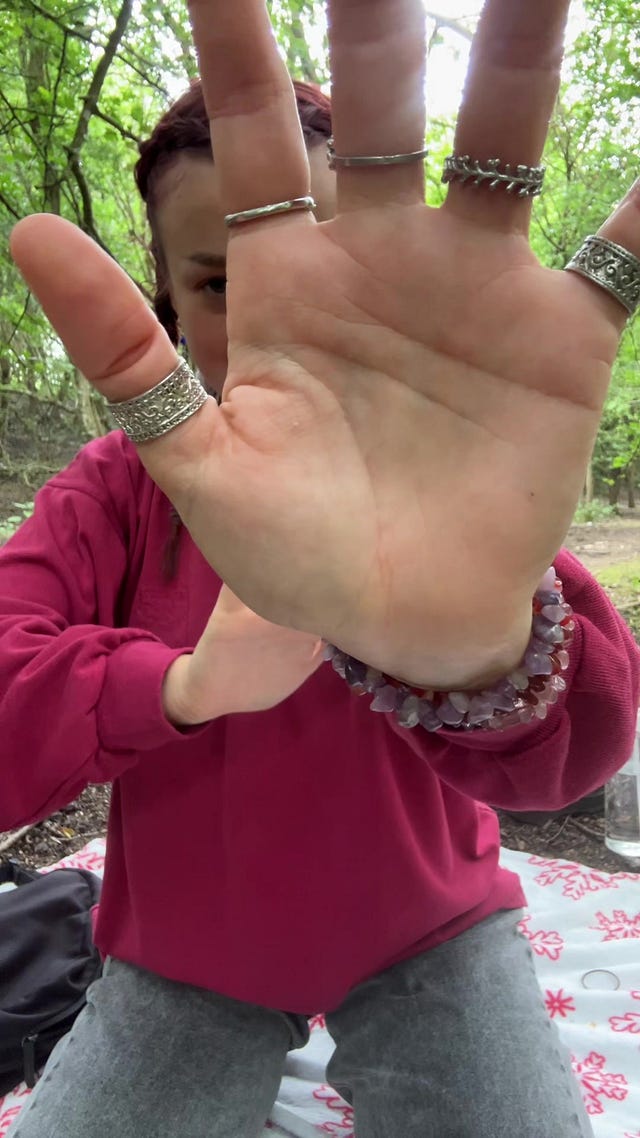“Watch how crazy perspective is” starts creator McCall Capozzi on a TikTok paired with the caption: “the words you speak become the house you live in”...
First perspective: “I’m 30 years old, I’m single, I live at home…my job is hard…all my friends are getting engaged and I’m not…life somehow feels the same every day somehow.
Second perspective: “I am 30 years old you guys and I live at home because I just spent the last year travelling around the world, doing whatever I wanted, meeting so many people, having so much flexibility. And I get to live at home and save for my own place. And spend this quality time with my family. And I haven’t met my person yet which is so cool because I get to fall in love with the person for the first time.”
Sure, it’s TikTok-style self-help (and if you’re older than 30 and single, a little eye-roll-inducing). But McCall’s message is helpful: shift your perspective and your life can transform.
 Tiktok failed to load.
Tiktok failed to load.Enable 3rd party cookies or use another browser
But this isn’t a therapy newsletter; it’s a brand strategy one. So why does perspective-shifting matter here?
Applying perspective shifting to brand
Because just like McCall reframes her problems into opportunities, great brands do the same for their customers. Strategy isn’t just about solving problems; it’s about transforming how customers feel about their situation. A great brand makes people see their challenges or barriers in a new light—shifting their perspective from “this is hard” to “this is exciting.” Ultimately, it helps them see themselves differently.
Take Nike. They didn’t just sell sneakers – they sold a reframe. Nike turned “I’m not a runner” into “everyone’s an athlete” with the iconic statement: “If you have a body, you’re an athlete.” Suddenly, amateur exercisers became aspiring athletes.
Or Airbnb turning “I can’t afford to travel and stay in fancy hotels” to "I can have authentic, affordable experiences and feel at home anywhere in the world.” Airbnb transformed the idea of budget accommodations into a celebration of connection and belonging, positioning travelers as global citizens (not budgeters).
When we worked with Cambly, the English language learning app, we knew we were competing with the likes of Duolingo, which makes learning a language feel easy and fun. Their notifications, dopamine hits, and playful characters make you feel like you’re killing it – when in reality, have you ever tried to actually speak Japanese after using Duolingo? Cambly, by contrast, focuses on real conversations with native English speakers, leading to real progress.
But we knew that to succeed, we had to reframe the fear of speaking a new language (palms sweating, heart racing, cheeks reddening) into something empowering. Inspired by sports, where difficulty signals growth, we built a brand all around “doing English” – active learning that reframes the mistakes, and missteps as essential markers of progress. And Cambly’s customers as driven dreamers who embrace challenges and go after what they want.
If we take McCall’s caption – “the words you speak become the house you live in” – as a directive, the words you use as a brand should do the same. They should create a “home” for your customers, reflecting back to them not who they are, but who they aspire to be. Every phrase, tagline, and message should reinforce the reframe, anchoring customers in this new, aspirational version of themselves.
Airbnb’s celebration of ‘feeling at home anywhere in the world’ doesn’t just sell rooms; it sells an aspirational identity. And Cambly’s emphasis on ‘progress not perfection’ and ‘doing English’ doesn’t just sell lessons; it sells courage.
When your brand’s words align with the reframe, they do more than communicate –they inspire. They become a mirror, reflecting the best version of your customer back at them and making them believe in their potential. Because the right words don’t just describe a product or solve a problem – they redefine what’s possible.
The Advice
How to start thinking about your reframe
Start by understanding the problem
Dig deep into your customers' challenges, fears, or pain points. What’s holding them back or making them feel stuck? A meaningful reframe starts with empathy for what they’re experiencing.Turn the problem into a positive
Look for ways to flip the narrative. If the challenge is “This is hard,” the reframe might be “This hard thing means you’re growing.” Think of fear, failure, or limitations as stepping stones, not barriers.Define the aspirational mindset
What is the ideal version of your customer? Who do they want to become? Your reframe should help bridge the gap between their current state and their aspirational self.Anchor your messaging in truth
A great reframe doesn’t rely on fluff or exaggeration. It’s rooted in what your product or service genuinely delivers. Find the intersection between what your brand offers and what your audience aspires to.Test and learn
Experiment with different reframes in your messaging and see what resonates. Pay attention to what sparks emotional reactions, engagement, or a shift in how customers talk about themselves or your product.Be consistent across touchpoints
Once you’ve identified your aspirational frame, weave it through every aspect of your brand—from advertising to customer service to packaging. The words and imagery your audience sees should always reinforce the new perspective you're offering them.Show your hero in action
Use your team, influencers or community to bring that aspirational audience (or hero) to life for your audience.
The Vortex
There’s a lot we can learn from Richard Thaler’s Nudge theory. It’s behavioural economics, all about ‘choice architecture’ – getting under the skin of how people think, and how to make it easier for them to choose what’s best for themselves.
Your brand is a social construct, says Matt Locke.
If you can think it, you can achieve it: ‘manifest’ is Cambridge Dictionary’s word of 2024.
Okay, hear us out: these lateral-thinking puzzles might seem like a frilly bit of fun (they are!), but they’re also a great way to get us out of that A-to-B brain rut and approach problems from different angles. Enjoyyyyy :)
If you’ve been sent this by a friend,
colleague or smart significant other,
consider subscribing so we reach you next time.






"Because the right words don’t just describe a product or solve a problem – they redefine what’s possible." That's where us writers need to be 👏🏾
I love this take, but then, I am an optimist (as I think a lot of us who work in brand are)! How do you balance a perspective shift lens with the growing pessimism/nihilism online? Or is it about an optimistic perspective shift in strategy, and you can use tone to balance how you execute in places like social where everyone loves a cynic and a hot take?